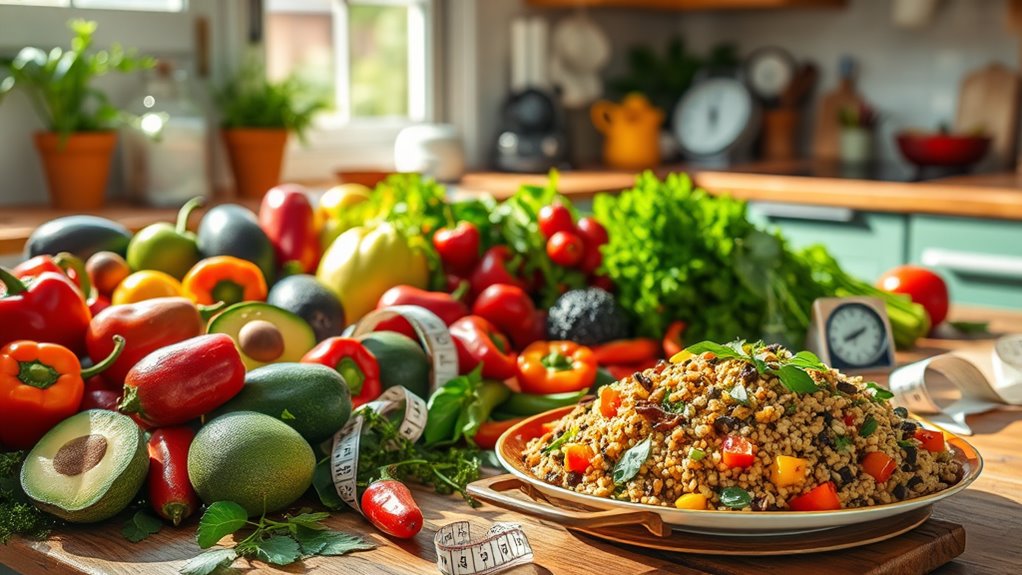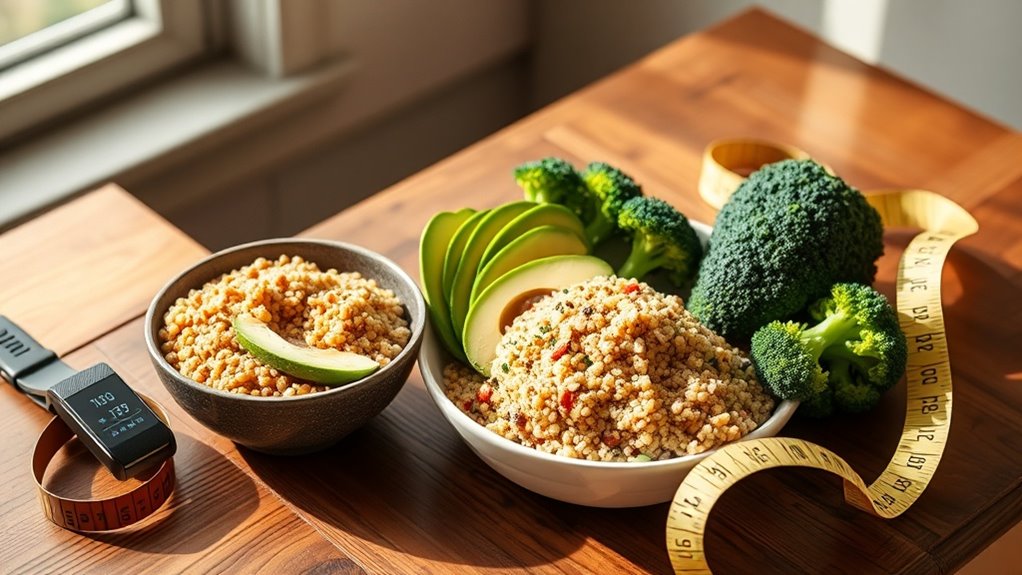The Truth About ‘Fat-Burning’ Foods – Do They Really Work.
Imagine a magic potion that promises to melt away your fat with every sip or bite. This allure of ‘fat-burning’ foods, like chili peppers and green tea, often leads to misconceptions about their actual effectiveness. While certain compounds can indeed boost metabolism, the reality is far more complex. What you need to understand is that these foods alone won’t lead to significant weight loss without a broader commitment to a balanced lifestyle. Curious about what that entails?
Key Takeaways
- No single food can trigger fat loss; a balanced diet and regular exercise are essential for effective weight management.
- Foods labeled as ‘fat-burning’ can enhance metabolism slightly but are not a substitute for lifestyle changes.
- High-protein and fiber-rich foods promote satiety and may support weight loss efforts when included in a healthy diet.
- Myths surrounding fat-burning foods can mislead; sustainable weight loss requires time, effort, and informed dietary choices.
- Hydration, mindful eating, and regular physical activity are crucial components of a healthy lifestyle that support weight loss.
Understanding the Concept of ‘Fat-Burning’ Foods
What makes certain foods touted as “fat-burning”?
It’s primarily their ability to boost metabolism, enhance thermogenesis, or promote satiety.
For example, foods rich in protein, like lean meats, require more energy for digestion, which can increase calorie expenditure.
Spicy foods, such as chili peppers, contain capsaicin, known to temporarily elevate metabolism.
Additionally, fiber-rich foods keep you feeling full longer, reducing overall calorie intake.
These fat burning food facts reveal that while no food magically melts fat away, incorporating these items into your diet can support weight management when combined with a balanced lifestyle and regular exercise. Moreover, maintaining optimal metabolic health is crucial for maximizing the effects of these foods on fat loss.
The Science Behind Metabolism and Food
Metabolism plays a crucial role in how your body processes food and converts it into energy. It involves complex biochemical reactions that break down carbohydrates, fats, and proteins. When you eat, your body uses enzymes to transform these macronutrients into energy, which fuels your daily activities. Factors like age, gender, muscle mass, and activity level influence your metabolic rate. For instance, muscle tissue burns more calories than fat tissue, meaning that building muscle can enhance your metabolism. Understanding this process helps you make informed dietary choices, as not all foods affect your metabolism equally. It’s essential to focus on balanced nutrition for optimal energy levels, and incorporating strength training can further boost your metabolic rate.
Common Myths About Fat-Burning Foods
Despite the growing popularity of fat-burning foods, many misconceptions surround their effectiveness.
One common myth is that certain foods can magically melt away fat. In reality, no single food can trigger fat loss without a balanced diet and exercise.
Another misconception is that eating fat-burning foods allows you to overindulge elsewhere; however, excess calories will still lead to weight gain.
Lastly, some believe that these foods boost metabolism significantly, but while they can have minor effects, lifestyle choices play a far more crucial role.
Understanding these myths helps you make informed dietary decisions and fosters a healthier relationship with food. Additionally, it’s important to recognize that sustainable weight loss requires time and effort, not quick fixes.
Foods That May Aid in Weight Loss
Incorporating certain foods into your diet can contribute to weight loss efforts.
Foods high in protein, like lean meats and legumes, boost metabolism and promote satiety, helping you feel fuller longer. Fiber-rich fruits, vegetables, and whole grains slow digestion, reducing hunger pangs.
Additionally, healthy fats from avocados and nuts can curb cravings while providing essential nutrients. Green tea contains catechins, which may enhance fat oxidation.
Spices like cayenne pepper may increase thermogenesis, further aiding fat loss. Combining these elements creates delicious, supportive meals for weight loss.
While these foods can support your goals, remember that a balanced diet and regular activity are crucial for sustainable weight management.
Practical Tips for a Healthy Diet and Lifestyle
Achieving a healthy diet and lifestyle involves more than just adding fat-burning foods to your meals.
Focus on consuming a balanced diet rich in whole foods like fruits, vegetables, lean proteins, and whole grains.
Stay hydrated by drinking plenty of water, which aids digestion and curbs hunger.
Incorporate regular physical activity—aim for at least 150 minutes of moderate exercise weekly.
Mindful eating is crucial; pay attention to portion sizes and avoid distractions during meals.
Lastly, prioritize sleep and stress management, as both significantly impact your overall health and weight. Mindful eating enhances satisfaction and enjoyment of meals, making it easier to stick to your healthy eating habits.
These practical changes can lead to sustainable results in your journey.





